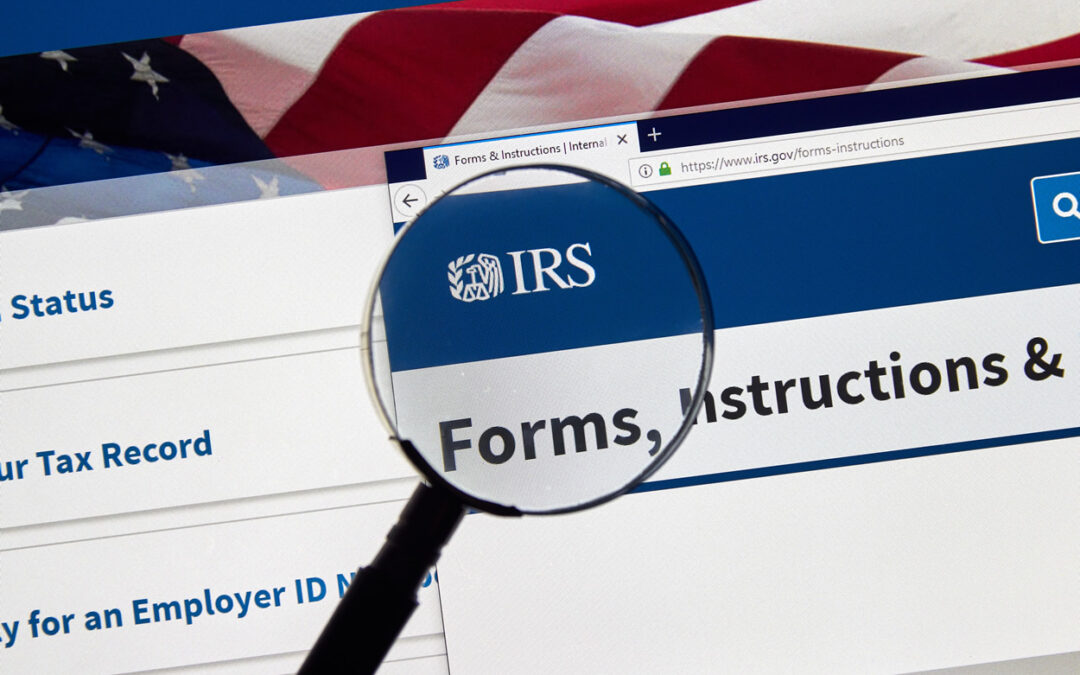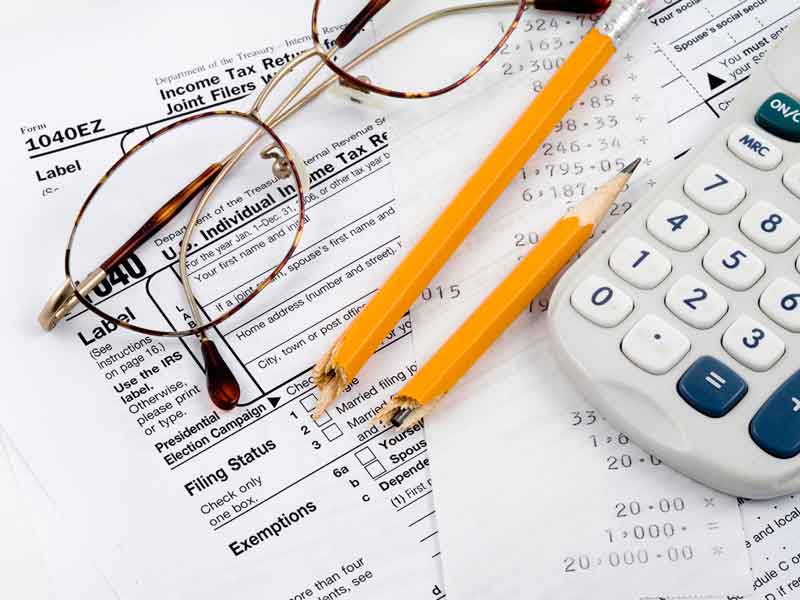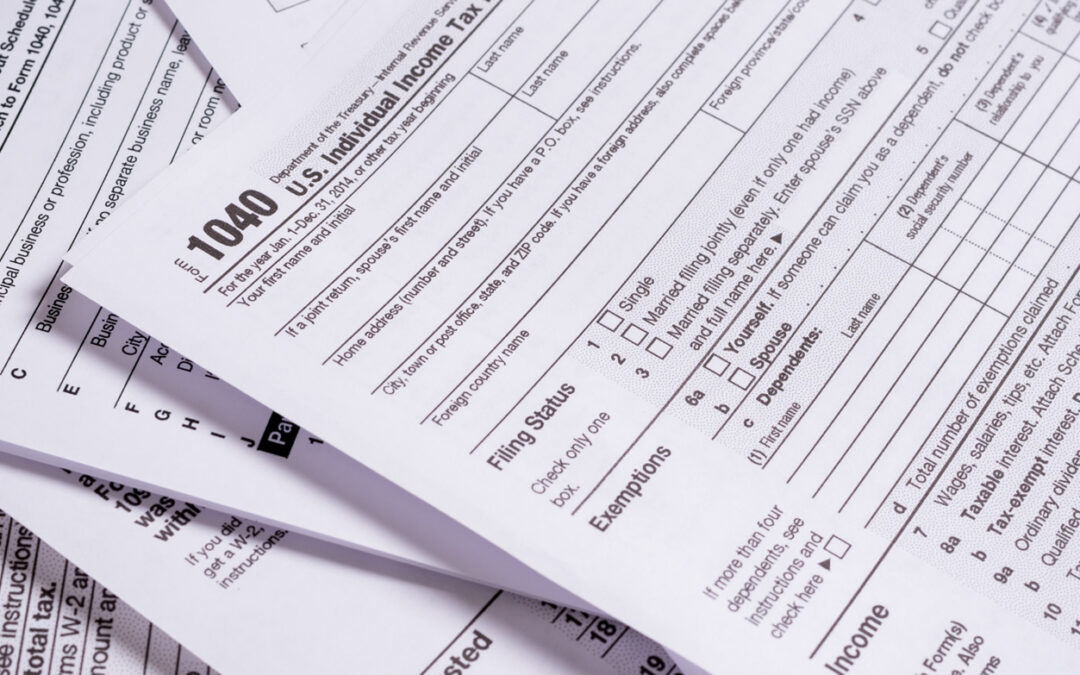
by sreamercpa | Mar 19, 2024 | accounting-tax
Issue Number: IR-2024-31
IRS: Take care when choosing a tax return professional
WASHINGTON –The Internal Revenue Service today reminded taxpayers that carefully choosing a tax professional to prepare a tax return is vital to ensuring that their personal and financial information is safe and secure and treated with care.
Most tax return preparers provide honest, high-quality service. But some may cause harm through fraud, identity theft and other scams.
It is important for taxpayers to understand who they’re choosing and what important questions to ask when hiring an individual or firm to prepare their tax return.
Another reason to choose a tax preparer carefully is because taxpayers are ultimately legally responsible for all the information on their income tax return, regardless of who prepares it.
The IRS has put together a Directory of Federal Tax Return Preparers with Credentials and Select Qualifications to help individuals find a tax pro that meets high standards. There is also a special page on IRS.gov for Choosing a Tax Professional that can help guide taxpayers in making a good choice, including selecting someone affiliated with a recognized national tax association. There are different kinds of tax professionals, and a taxpayer’s needs will help determine which kind of preparer is best for them.
Red flags to watch out for
There are warning signs that can help steer taxpayers away from unscrupulous tax return preparers. For instance, not signing a tax return is a red flag that a paid preparer is likely not to be trusted. They may be looking to make a quick profit by promising a big refund or charging fees based on the size of the refund.
These unscrupulous “ghost” preparers often print the return and have the taxpayer sign and mail it to the IRS. For electronically filed returns, a ghost preparer will prepare the tax return but refuse to digitally sign it as the paid preparer. Taxpayers should avoid this type of unethical preparer.
In addition, taxpayers should always choose a tax professional with a valid Preparer Tax Identification Number. By law, anyone who is paid to prepare or assists in preparing federal tax returns must have a valid PTIN. Paid preparers must sign and include their PTIN on any tax return they prepare.
Other tips
Here are a few other tips to consider when choosing a tax return preparer:
- Look for a preparer who’s available year-round. If questions come up about a tax return, taxpayers may need to contact the preparer after the filing season is over.
- Review the preparer’s history. Check the Better Business Bureau website for information about the preparer. Look for disciplinary actions and the license status for credentialed preparers. For CPAs, check the State Board of Accountancy’s website, and for attorneys check with the State Bar Association. For enrolled agents go to IRS.gov and search for “verify enrolled agent status” or check the IRS Directory of Federal Tax Return Preparers.
- Ask about service fees. Taxpayers should avoid tax return preparers who base their fees on a percentage of the refund or who offer to deposit all or part of the refund into their own financial accounts. Be wary of tax return preparers who claim they can get larger refunds than their competitors.
- Find an authorized IRS e-file provider. They are qualified to prepare, transmit and process e-filed returns. The IRS issues most refunds in fewer than 21 days for taxpayers who file electronically and choose direct deposit.
- Provide records and receipts. Good preparers ask to see these documents. They’ll also ask questions to determine the client’s total income, deductions, tax credits and other items. Do not hire a preparer who e-files a tax return using a pay stub instead of a Form W-2. This is against IRS e-file rules.
- Understand the preparer’s credentials and qualifications. Attorneys, CPAs and enrolled agents can represent any client before the IRS in any situation. Annual Filing Season Program participants may represent taxpayers in limited situations if they prepared and signed the tax return.
- Never sign a blank or incomplete return. Taxpayers are responsible for filing a complete and correct tax return.
- Review the tax return before signing it. Be sure to ask questions if something is not clear or appears inaccurate. Any refund should go directly to the taxpayer – not into the preparer’s bank account. Review the routing and bank account number on the completed return and make sure it’s accurate.
Taxpayers can report preparer misconduct to the IRS using Form 14157, Complaint: Tax Return Preparer. If a taxpayer suspects a tax return preparer filed or changed their tax return without their consent, they should file Form 14157-A, Tax Return Preparer Fraud or Misconduct Affidavit.
For more information

by sreamercpa | Mar 29, 2023 | accounting-tax, IRS, maryland-taxes, reisterstown-md-cpa, tax-planning
Dirty Dozen: Taking tax advice on social media can be bad news for taxpayers; schemes circulating involving tax forms
WASHINGTON – The Internal Revenue Service today continued the Dirty Dozen series with a warning on day seven about trusting tax advice on social media that can lure otherwise honest taxpayers and tax professionals into compromising tax situations.
Social media can circulate inaccurate or misleading tax information, and the IRS has recently seen several examples. These can involve common tax documents like Form W-2 or more obscure ones, like Form 8944 that’s aimed at a very limited, specialized group. Both schemes encourage people to submit false, inaccurate information in hopes of getting a refund.
“There are many ways to get good tax information, including from a trusted tax professional, tax software and IRS.gov. But people should be incredibly wary about following advice being shared on social media,” said IRS Commissioner Danny Werfel. “The IRS continues to see a lot of inaccurate information that could get well-meaning taxpayers in trouble. People should remember that there is no secret way to fill out a form and simply get a larger refund that they aren’t entitled to. Remember, if it sounds too good to be true, it probably is.”
Fraudulent form filing and bad advice on social media are part of the 2023 IRS annual Dirty Dozen campaign – a list of 12 scams and schemes that put taxpayers and the tax professional community at risk of losing money, personal information, data and more.
Working together as the Security Summit, the IRS, state tax agencies and the nation’s tax industry have taken numerous steps since 2015 to warn people about common scams and schemes during tax season and beyond, including identity theft schemes. The Security Summit initiative is committed to protecting taxpayers, businesses and the tax system against fraud and identity theft.
Some items on this year’s Dirty Dozen list are new, while others are re-emerging. While the Dirty Dozen is not a legal document or a formal listing of agency enforcement priorities, it is intended to alert taxpayers and the tax professional community about various scams and schemes.
Trending on social media: Fraudulent form filing and bad advice
Social media can connect people and information from all over the world. Unfortunately, sometimes people provide bad advice that can lure good taxpayers into trouble. The IRS warns taxpayers to be wary of trusting internet advice, whether it’s a fraudulent tactic promoted by scammers or it’s patently false tax-related scheme trending across popular social media platforms.
The IRS is aware of various filing season hashtags and social media topics leading to inaccurate and potentially fraudulent information. The central theme involves people trying to use legitimate tax forms for the wrong reason. Here are just two of the recent schemes circulating online:
Form 8944 fraud
A recent example of bad advice circulating on social media that could lead to fraudulent form filing involves Form 8944, Preparer e-File Hardship Waiver Request. There are wildly inaccurate suggestions being made about this form. Posts claim that Form 8944 can be used by taxpayers to receive a refund from the IRS, even if the taxpayer has a balance due. This is false information. Form 8944 is for tax professional use only.
While Form 8944 is a legitimate IRS tax form, it’s intended for a targeted group of tax return preparers who are requesting a waiver so they can file tax returns on paper instead of electronically. It is not in any way a form the average taxpayer can use to avoid tax bills. Taxpayers who intentionally file forms with false or fraudulent information can face serious consequences, including potentially civil and criminal penalties.
Form W-2 fraud
This scheme, which is circulating on social media, encourages people to use tax software to manually fill out Form W-2, Wage and Tax Statement, and include false income information. In this W-2 scheme, scam artists suggest people make up large income and withholding figures as well as the employer its coming from. Scam artists then instruct people to file the bogus tax return electronically in hopes of getting a substantial refund.
The IRS, along with the Security Summit partners in the tax industry and the states, are actively watching for this scheme. In addition, the IRS works with payroll companies and large employers – as well as the Social Security Administration – to verify W-2 information.
The IRS and Summit partners warn people not to fall for this scam. Taxpayers who knowingly file fraudulent tax returns potentially face significant civil and criminal penalties.
How taxpayers can verify information
Keep in mind: If something sounds too good to be true, it probably is.
- gov has a forms repository with legitimate and detailed instructions for taxpayers on how to fill out the forms properly.
- Use IRS.gov, official IRS social media accounts, or other government sites to fact check information.
Make a difference: Report fraud, scams and schemes
As part of the Dirty Dozen awareness effort, the IRS encourages people to report individuals who promote improper and abusive tax schemes as well as tax return preparers who deliberately prepare improper returns.
To report an abusive tax scheme or a tax return preparer, people should mail or fax a completed Form 14242, Report Suspected Abusive Tax Promotions or Preparers and any supporting materials to the IRS Lead Development Center in the Office of Promoter Investigations.
Mail:
Internal Revenue Service Lead Development Center
Stop MS5040
24000 Avila Road Laguna Niguel, CA 92677-3405
Fax: 877-477-9135
Alternatively, taxpayers and tax practitioners may send the information to the IRS Whistleblower Office for possible monetary reward.
For more information, see Abusive Tax Schemes and Abusive Tax Return Preparers

by sreamercpa | Mar 3, 2023 | accounting-tax, IRS
WASHINGTON – The Internal Revenue Service issued a consumer alert today to warn taxpayers of new scams that urge people to use wage information on a tax return to claim false credits in hopes of getting a big refund.
One scheme, which is circulating on social media, encourages people to use tax software to manually fill out Form W-2, Wage and Tax Statement, and include false income information. In this W-2 scheme, scam artists suggest people make up large income and withholding figures as well as the employer it is coming from. Scam artists then instruct people to file the bogus tax return electronically in hopes of getting a substantial refund – sometimes as much as five figures – due to the large amount of withholding.
The IRS along with the Security Summit partners in the tax industry and the states, are actively watching for this scheme and others. In addition, the IRS works with payroll companies and large employers – as well as the Social Security Administration – to verify W-2 information.
With National Consumer Protection Week starting Monday, the IRS and Summit partners warn people not to fall for these scams.
“We are seeing signs this scam is increasing, and we worry that innocent taxpayers could be at risk of being tempted into falling into a trap that puts them at risk of financial and criminal penalties,” said Acting IRS Commissioner Doug O’Donnell. “The IRS and Security Summit partners remind people there is no secret way to get free money or a big refund. People should not make up income and try to submit a fraudulent tax return in hopes of getting a huge refund.”
Two variations of this scheme are also being seen by the IRS; both involve misusing Form W-2 wage information in hopes of generating a larger refund:
- One variation involves people using Form 7202, Credits for Sick Leave and Family Leave for Certain Self-Employed Individuals, to claim a credit based on income earned as an employee and not as a self-employed individual. These credits were available for self-employed individuals for 2020 and 2021 during the pandemic; they are not available for 2022 tax returns.
- A similar variation involves people making up fictional employees employed in their household and using Schedule H, Household Employment Taxes, to try claiming a refund based on false sick and family wages they never paid. The form is designed to report household employment taxes if a taxpayer hired someone to do household work and those wages were subject to Social Security, Medicare or FUTA taxes, or if the employer withheld federal income tax from those wages.
The IRS reminds people who try this that they face a wide range of penalties. This may include a frivolous return penalty of $5,000. Filers also run the risk of criminal prosecution for filing a false tax return.
For anyone who has participated in one of these schemes, there are several options that the IRS recommends. People can amend a previous tax return or consult with a trusted tax professional

by sreamercpa | Feb 16, 2023 | accounting-tax, IRS
Issue Number: IR-2023-28
Inside This Issue
Avoid the rush: Presidents Day marks peak time period for calls; use IRS online tools in February to avoid delays, get tax help
WASHINGTON — With the nation entering a peak period for filing taxes, the Internal Revenue Service urges taxpayers to use online tools to get answers quickly and avoid phone delays during a traditional peak period for IRS phone lines around Presidents Day.
Presidents Day weekend, when many people prepare their taxes, historically marks a peak period for IRS phone lines. During the two week February period following Presidents Day, the IRS recommends turning first to the self-help tools available online on IRS.gov to avoid delays.
“The IRS continues to see improvements this tax season compared to previous years, including better phone service,” said IRS Acting Commissioner Doug O’Donnell. “But we always see a significant surge in phone traffic around Presidents Day. With the calendar advancing, millions of people turn their attention to taxes during this period. To avoid potential delays, we encourage people to check IRS.gov first, which can provide much of the same information instantly to taxpayers.”
Easy-to-use and available anytime, the IRS website can help taxpayers file and pay taxes, find information about their accounts, determine eligibility for tax credits and get answers to tax questions.
And when it comes time to file, taxpayers are encouraged to e-file and choose direct deposit to get their refunds as quickly as possible.
Available IRS tools to help taxpayers through tax filing season
The IRS recommends trying the following self-help resources available to taxpayers 24/7 for a smooth and easy tax filing experience.
- IRS.gov offers a variety of online tools to help taxpayers answer common tax questions. For example, taxpayers can search the Interactive Tax Assistant, Tax Topics and Frequently Asked Questions to find answers.
- The Earned Income Tax Credit Assistant allows taxpayers to check eligiblity for this valuable credit. Taxpayers can also calculate how much EITC they may get and find answers to EITC questions.
- IRS Online Account gives taxpayers secure access to personal tax account information including balance, payments and tax records with previous year’s adjusted gross income information.
- The IRS offers basic tax information in several languages to help taxpayers get the information they need to file a federal tax return and pay any tax owed.
- IRS Free File provides eligible taxpayers who want to prepare their own returns free tax preparation and the Volunteer Income Tax Assistance (VITA) or Tax Counseling for the Elderly (TCE) programs offer free tax help from certified volunteers at thousands of sites across the country.
- The “Where’s My Refund?” tool on IRS.gov and the IRS2Go app allow taxpayers to check the status of their refund within 24 hours after the IRS accepts their e-filed tax return. Where’s My Refund? updates once every 24 hours, usually overnight, so taxpayers don’t need to check more than once a day. Tax law prevents the IRS from issuing refunds that include the EITC and/or the Additional Child Tax Credit before Feb. 15. But not to worry, “Where’s My Refund?” should provide an updated refund status for most early filers by Feb. 18 and EITC/ACTC related refunds should be available in taxpayer bank accounts or on debit cards by Feb. 28 if they chose direct deposit and there are no other issues with their tax return.
- The Tax Withholding Estimator can help taxpayers determine the right amount of tax to have withheld from a paycheck. Taxpayers should submit a new Form W-4 to their employer if an adjustment is needed.
- The IRS Services Guide and the Let Us Help You page on IRS.gov can help taxpayers find additional ways to get help.
For those who need to talk to someone, the IRS has hired an additional 5,000 customer service representatives to help staff its toll-free customer service line. IRS Taxpayer Assistance Centers or TACs are another resource for individuals who need more than online tools or the IRS toll-free customer service line to solve a tax matter. Anyone who needs face-to-face service should make an appointment or check for special Saturday hours before visiting.
Missing information?
Taxpayers should call employers for missing Forms W-2. Those who did not receive a Form W-2, Wage and Tax Statement, from one or more employers by Jan. 31 should contact the issuer to inform them of the missing form.
Those who do not get a response from an issuer must still file on time and may need to use Form 4852, Substitute for Form W-2, Wage and Tax Statement, or Form 1099R, Distributions From Pensions, Annuities, Retirement or Profit-Sharing Plans, IRA’s Insurance Contracts, Etc.
For a copy of Form 1099 or 1042 to report Social Security income, visit the Social Security Administration website. These forms can be downloaded through my Social Security account. It’s fast and secure.

by sreamercpa | Jan 11, 2023 | accounting-tax, IRS, tax-planning
One of the first decisions taxpayers must make when completing a tax return is whether to take the standard deduction or itemize their deductions. There are several factors that can influence a taxpayer’s choice, including changes to their tax situation, any changes to the standard deduction amount and recent tax law changes.
Generally, most taxpayers use the option that gives them the lowest overall tax.
As taxpayers begin to think about filing their tax return, here are some things they should know about standard and itemized deductions.
Standard deduction
The standard deduction amount increases slightly every year. The standard deduction amount depends on the taxpayer’s filing status, whether they are 65 or older or blind, and whether another taxpayer can claim them as a dependent. Taxpayers who are age 65 or older on the last day of the year and don’t itemize deductions are entitled to a higher standard deduction.
Most filers who use Form 1040 can find their standard deduction on the first page of the form. The standard deduction for most filers of Form 1040-SR, U.S. Tax Return for Seniors, is on the last page of that form.
According to the Instructions for Form 1040 and 1040-SR, not all taxpayers can take a standard deduction, including:
- A married individual filing as married filing separately whose spouse itemizes deductions – if one spouse itemizes on a separate return, both must itemize.
- An individual who files a tax return for a period of less than 12 months. This is uncommon and could be due to a change in their annual accounting period.
- An individual who was a nonresident alien or a dual-status alien during the year. Nonresident aliens who are married to a U.S. citizen or resident alien, however, can take the standard deduction in certain situations.
Itemized deductions
Taxpayers who choose to itemize deductions may do so by filing Schedule A, Form 1040, Itemized Deductions. Itemized deductions that taxpayers may claim can include:
- State and local income or sales taxes.
- Real estate and personal property taxes.
- Home mortgage interest.
- Personal casualty and theft losses from a federally declared disaster.
- Gifts to a qualified charity.
- Unreimbursed medical and dental expenses that exceed 7.5% of adjusted gross income.
Some itemized deductions, such as the deduction for taxes, may be limited. Taxpayers should review the instructions for Schedule A Form 1040 for more information on limitations.
More information:
How Much Is My Standard Deduction?
Topic No. 551, Standard Deduction

by sreamercpa | Jan 1, 2023 | accounting-tax, IRS
The IRS issued the 2023 optional standard mileage rates used to calculate the deductible costs of operating an automobile for business, charitable, medical or moving purposes. Beginning Jan. 1, 2023, the standard mileage rates for the use of a car (also vans, pickups or panel trucks) will be:
- 65.5 cents per mile driven for business use, up 3 cents from the midyear increase setting the rate for the second half of 2022.
- 22 cents per mile driven for medical or moving purposes for qualified active-duty members of the Armed Forces, consistent with the increased midyear rate set for the second half of 2022.
- 14 cents per mile driven in service of charitable organizations; the rate is set by statute and remains unchanged from 2022.
These rates apply to electric and hybrid-electric automobiles, as well as gasoline and diesel-powered vehicles.






